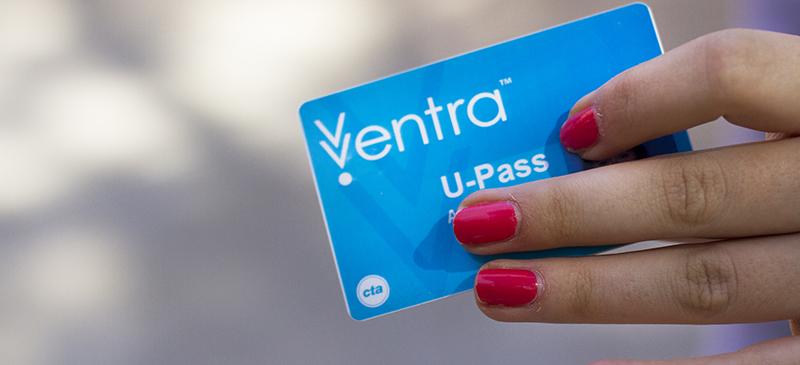CTA proposes to raise fares in 2018
The effects of the fare hike will most likely be unfavorable to all CTA riders.
December 15, 2017
Under the Chicago Transit Authority’s (CTA) new budget proposal, announced on Nov. 22, base fares could increase for the first time since 2009.
Both train and bus fares could increase by 25 cents apiece. According to Transit Chicago, the proposed fare would increase the cost of a train ticket to $2.50 from the current price of $2.25 and will increase the cost of a bus ticket to $2.25 from $2.00.
Aside from the fares of everyday train and bus tickets rising, thirty-day passes would surge to $105 from $100. This would mark the first time since 2013 that the cost of passes increased.
In order for the fare hikes to go into full effect, the CTA Board must approve the $1.5 billion spending plan at its meeting on Dec. 13, followed on Dec. 14 by the Regional Transportation Authority.
With that being said, if the fare hikes are approved at the meetings then they will set the official new market price come Jan. 7.
According to the CTA, as of 2015, the average weekday ridership for the buses stood at 873,147 commuters and 767,730 for trains.
Whether or not the fare hikes will actually go into full effect, there are many lingering questions as to why the CTA proposed this in the first place. Commuters that are already struggling financially won’t be too happy because more money will come out of their pockets.
An online letter from CTA’s President Dorval R. Carter, Jr. indicates that the primary reason for the proposed fare hikes is due to the state cutting the CTA’s annual funding by $33 million in 2018. Along with that cut, Carter mentioned that other factors posed a challenge to the CTA’s budget such as “historically low gas prices” and “new marketplace competition.”
“In essence, money on which we’ve traditionally relied simply wasn’t there,” Carter said.
Liliana Fargo, an adjunct economics professor at DePaul, has a different viewpoint on why the CTA proposed to increase fares.
“I could speculate that due to the high cost of pension liabilities and health care cost for public employees, this entity might be forced to raise its fares,” Fargo said.
No matter what the official reasoning is for the proposed fare hike, the economic impacts could be quite devastating on a microeconomic level. Microeconomics analyzes the economic behavior of individual units of an economy such as a person, household, firm or industry.
“A rate increase will certainly have a very negative impact in the residents who are already struggling to survive in a sluggish local economy, and it might motivate users to seek alternative forms of transportation (in particular Uber and Lyft.), Fargo predicts.
Fargo believes that a fare hike could lead to “changes in the working and travel arrangements” for commuters, meaning they might try to avoid committing to work in the city or travel into the city “only when strictly necessary.”
“The rate increase could also have a negative impact on the level of economic activity in the city.” Fargo said in regards to overall economic activity. “People traveling less to the city will also spend less in the city, leading to a decline in commercial activity and potential loss of jobs.”
Given Fargo’s predictions on how the CTA fare hike could impact commuters, she also elaborated on the outlook of revenue and its relation to the elasticity of demand, or demand elasticity. Demand elasticity is the degree to which demand for a good, or service in this circumstance, varies with its price.
“Depending on the elasticity of demand, a fare increase could or not generate more revenue for CTA. A highly elastic demand might, in fact, lead to lower total revenue,” Fargo said.
Despite the CTA’s proposal to raise fares, not all DePaul students are initially against it.
“There is nothing wrong with increasing the fares to help fund future improvement projects to increase the accessibility of public transit to underserved areas,” Jordan Delmonte, DePaul junior, said.
However, if the CTA fare hike doesn’t help out the city by way of infrastructure improvements or the quality of daily commutes for Chicagoans, there could be major consequences.
The effects of the fare hike will most likely be unfavorable to all CTA riders.
“Unless the CTA manages to provide a better quality of service, the fare increase will at the end create an extra burden for local residents, many of whom are already considering relocation to more affordable nearby areas,” Fargo said.
Along with Chicagoans being affected, DePaul students could be affected too, given that school Ventra passes don’t work during school breaks. Not to mention, some students stay in Chicago when school is not in session.
Delmonte works part-time and for the most part, resides in the city over breaks for work.
“I don’t believe the rate hike is fair to DePaul students who rely on the CTA during breaks,” Delmonte said. “Many students stay in Chicago during the school breaks and many of us work part-time or full-time, leading to reliance on public transit to go to and from work.”
Even though a fare hike could impact DePaul students, Thomas Byrne, a junior at DePaul, believes that it shouldn’t impact students too much because he believes that students already have poor spending habits that add up over time.
“College students often incur unnecessary expenses through getting their daily Starbucks, eating out too much and going to the bars on weekends,” Byrne said. “It will not put a large dent in their lifestyle.”





Kimberly Bursey-Reece / Dec 19, 2017 at 10:28 am
Very informative article Mr.Sully!